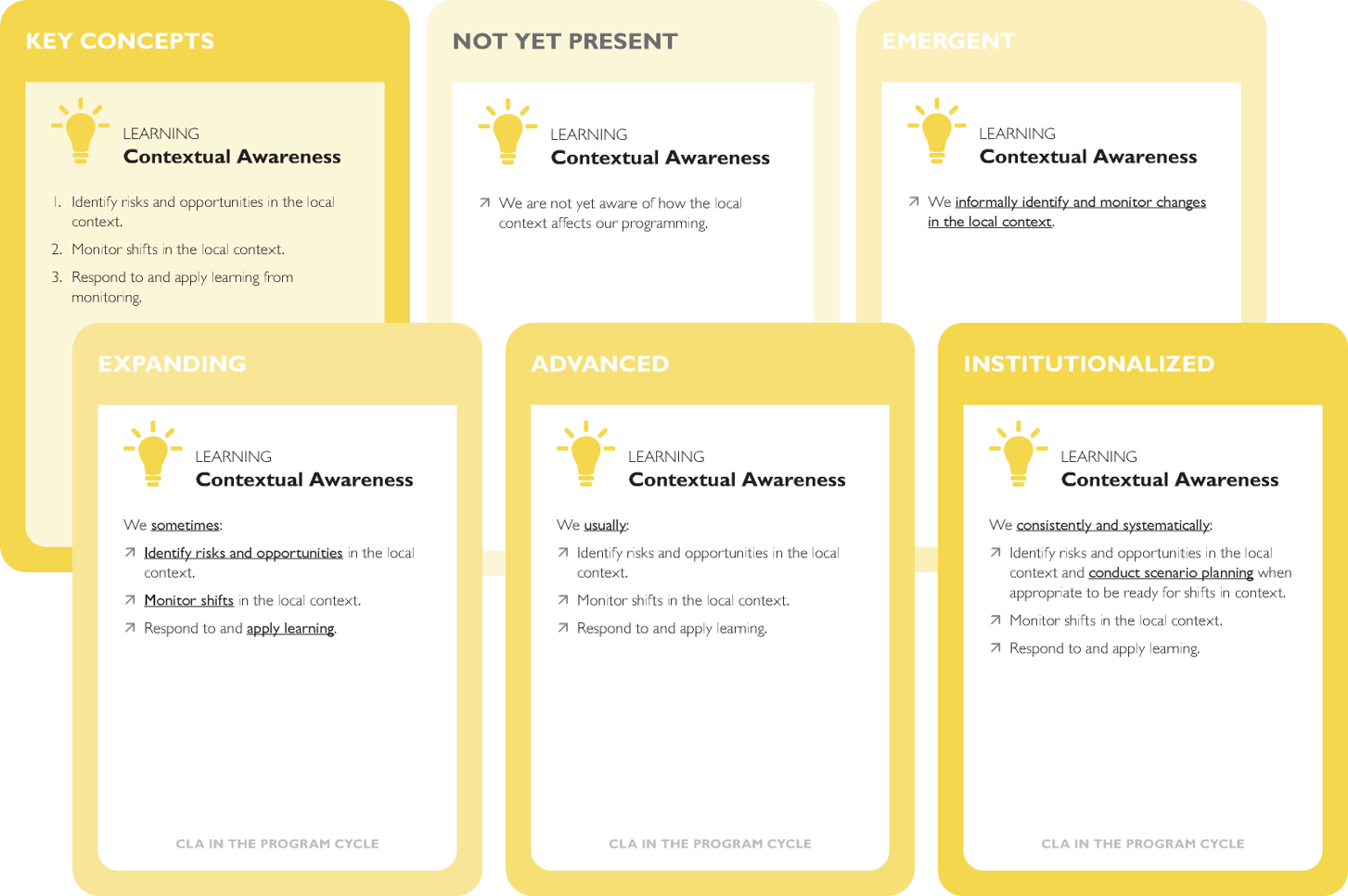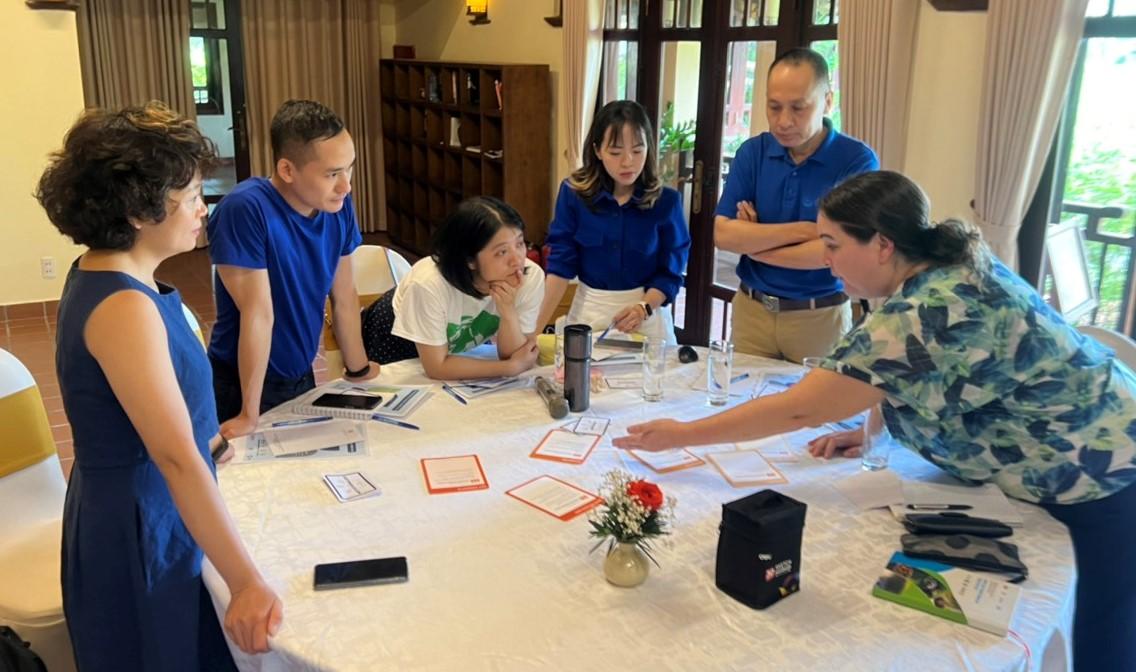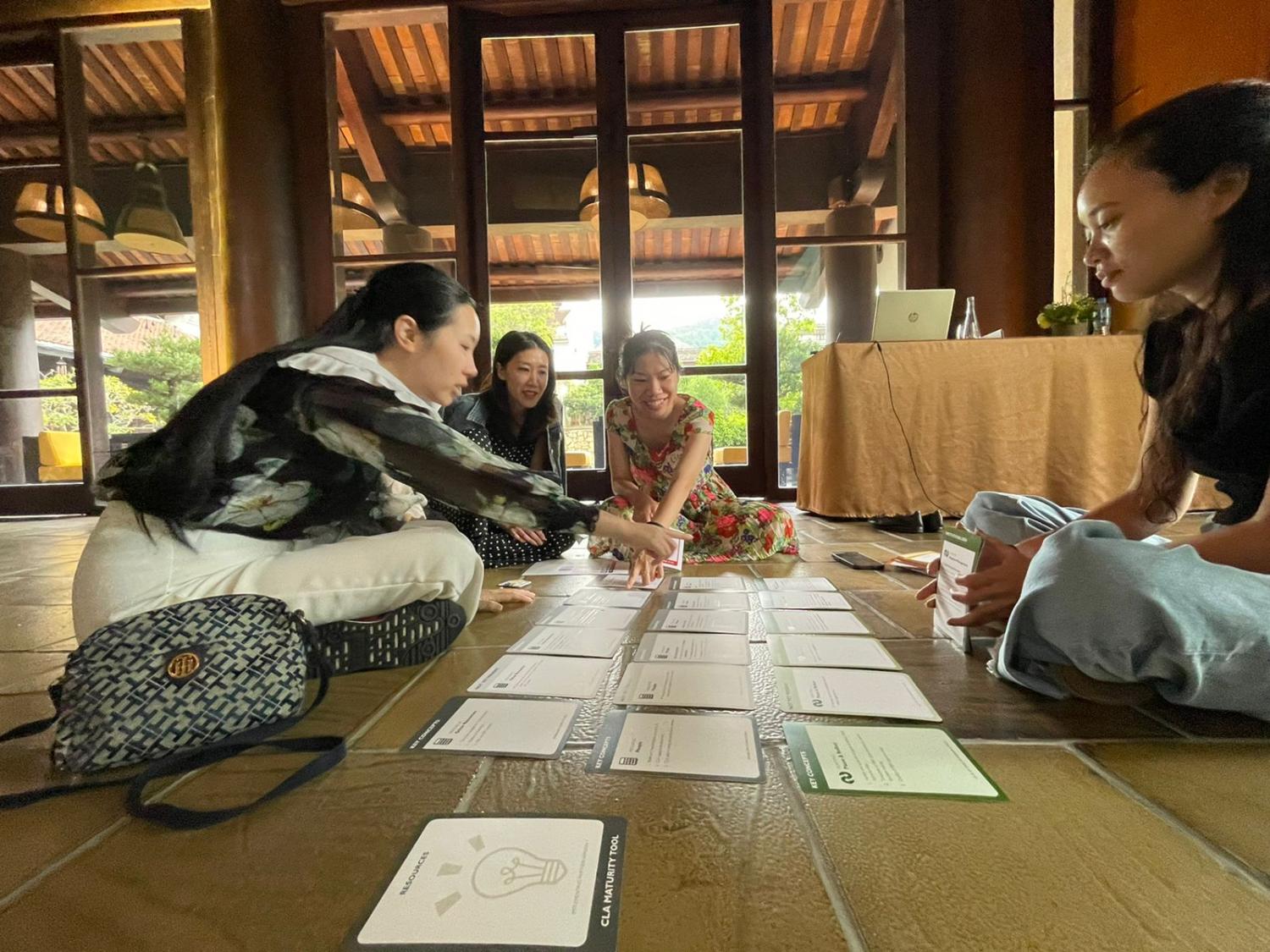Introducing the CLA Maturity Tool for Implementing Partners!
| Join Social Impact on December 13, 2022 for a webinar introducing the CLA Maturity Tool for Implementing Partners. This webinar is part of Social Impact’s Evidence for Impact webinar series and will also feature Lauren Hinthorne from USAID’s CLA Team and members from Winrock’s Reducing Pollution Activity and FHI360’s EpiC Program, who were the first two IPs to use this version of the tool. Space is limited so register now. |
The Collaborating, Learning & Adapting (CLA) Maturity Tool has been used by USAID operating units since 2015. The tool enables staff to self-assess their current CLA practice and plan ways to improve their internal and external collaboration, organizational learning efforts, and adaptive management practices. Recently, we built on this resource to create the CLA Maturity Tool for implementing partners (IPs) to provide a version that speaks more directly to the experience of international and local organizations.
For those unfamiliar with it, the CLA Maturity Tool provides a clear picture of what systematic, intentional, and resourced integration of CLA can look like on a series of physical cards. Working through the content on the cards together, teams can catalyze conversations about CLA, and:
- Self-Assess: assess the current state of their CLA practice across the dimensions in the CLA Framework
- Establish Vision: determine the aspirational future state for their CLA practice across the same dimensions
- Action Plan: through prioritization, identify where and how to focus future efforts to strengthen their CLA practice
- Track Progress: gain a snapshot in time and, when repeated in subsequent years, can help track changes in CLA integration over time

Example of Maturity Tool key concepts and spectrum cards for new Learning subcomponent of Contextual Awareness (updated from Scenario Planning).
In Vietnam, we introduced the implementing partner version of the CLA Maturity Tool to several USAID/Vietnam partners in a leadership development program. Participants from Winrock International and FHI 360 used the tool with their teams and shared their experience with us:
- Winrock International, the first IP to use the tool, integrated it into their annual work planning process for their USAID Reducing Pollution activity in Vietnam. They shared that the tool helped their team identify strategic priorities for growth and development over the next year in the areas of Internal Collaboration and Adaptive Management. Chief of Party Brian Bean reported that the tool “was simple to use, and made it fun to have an open conversation about what was working well and where we wanted to improve.”

The Winrock USAID Reducing Pollution team self-assessing their internal collaboration with the CLA Maturity Tool at their FY23 Annual Planning Workshop.
- FHI 360’s USAID Meeting Targets and Maintaining Epidemic Control (EpiC) team in Vietnam incorporated the CLA Maturity Tool into their pause and reflect approach as part of a broad organizational change effort to improve cohesion, innovation and effectiveness.

FHI 360 EpiC Vietnam team members discuss and prioritize subcomponents of the CLA Maturity Toolkit
If you are interested in facilitating the maturity tool process for your team or organization, see these helpful facilitation resources on Learning Lab here.
So, what’s different?
Having been involved in the creation of the original USAID version of the tool, we were committed to aligning this implementing partner version as closely to the original as possible. We started by removing all USAID-specific references (such as portfolio reviews, references to Mission staff or operating units, etc.) and making it more general to organizations working in international development. Additional changes include:
| Component and Subcomponents | Key changes |
| Learning: Theories of Change | Updated key concepts to align with the latest thinking from USAID on theories of change and USAID Learns’ Theory of Change Workbook |
| Learning: Scenario Planning | Broadened beyond scenario planning to contextual awareness, of which scenario planning is one possible approach |
| Processes: Knowledge Management and Institutional Memory | Delineated between explicit and tacit knowledge capture and included the importance of onboarding |
| Resources | Articulated resources needed for CLA at the implementing partner level, focusing especially on people, time and budget for CLA activities, resource flexibility, and MEL & Knowledge Management systems |
The implementing partner version of the CLA Maturity Tool is currently available in English and Vietnamese. If you are interested in translating the tool into other languages, please contact us at [email protected] and [email protected] to coordinate and share with the wider USAID Learning Lab community.



